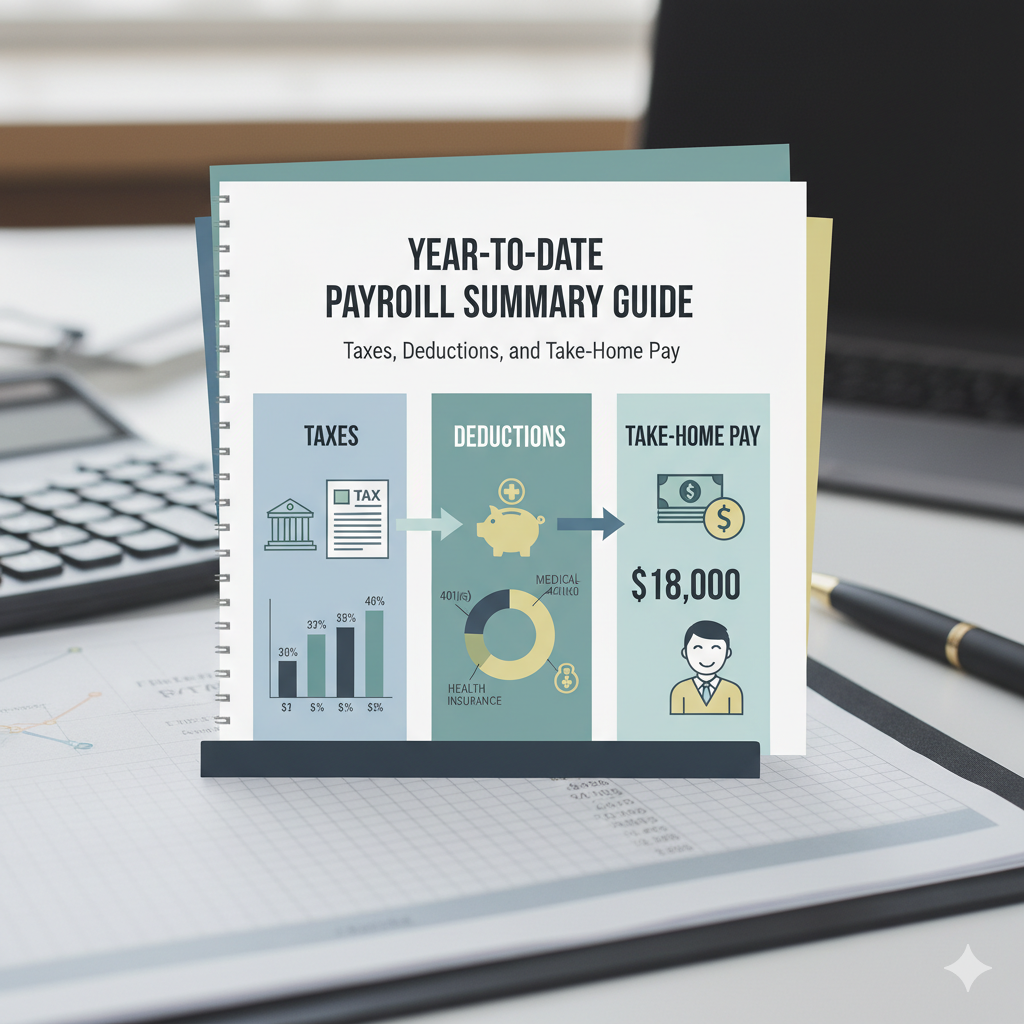If you’re an employee in the Philippines, your payslip contains more than just your salary—it’s a record of your earnings, deductions, and contributions. One of the most important sections is the Year-To-Date (YTD) Payroll Summary, which shows the total amounts you’ve earned and paid since the start of the year.
Understanding your YTD payroll summary is essential for budgeting, tax compliance, and financial planning. This guide will walk you through everything you need to know about gross pay, deductions, contributions, and take-home pay in the Philippine payroll system.
What Is a Year-To-Date (YTD) Payroll Summary?
A YTD Payroll Summary is a running total of your salary, taxes, and deductions from January 1 up to your most recent payroll cycle.
In the Philippines, this usually includes:
- Gross Earnings – Basic pay, overtime, allowances, and bonuses before deductions.
- Statutory Contributions – SSS, PhilHealth, and Pag-IBIG Fund.
- Withholding Tax – Based on the Bureau of Internal Revenue (BIR) tax table.
- Other Deductions – Loans, insurance, or company-specific deductions.
- Net Pay (Take-Home Pay) – The actual salary credited to your bank account.
Why Is the YTD Payroll Summary Important in the Philippines?
Tax Filing and Compliance
At year-end, your YTD totals form the basis of your BIR Form 2316, which is required for annual income tax reporting.
Tracking Government Contributions
Monitoring SSS, PhilHealth, and Pag-IBIG ensures your employer remits correct amounts, protecting your benefits.
Financial Planning and Budgeting
Understanding your gross vs. net pay helps you plan expenses, savings, and investments.
Loan Applications
Many banks require payslips or YTD summaries as proof of income for credit cards, housing loans, or car financing.
Key Components of a YTD Payroll Summary in the Philippines
Gross Earnings
Your gross pay includes:
- Basic salary
- Overtime pay
- Holiday pay
- Night differential
- Allowances and bonuses
Statutory Contributions
Every employee in the Philippines contributes to:
- SSS (Social Security System) – Retirement, disability, and maternity benefits
- PhilHealth – Health insurance coverage
- Pag-IBIG Fund (HDMF) – Housing and savings program
Withholding Tax
Employers deduct withholding tax each payday based on BIR’s graduated income tax rates (TRAIN Law). This is credited against your annual income tax due.
Other Deductions
These may include:
- Company loans or cash advances
- Union dues (if applicable)
- Voluntary insurance premiums
Net Pay (Take-Home Pay)
This is the final amount after all deductions. It reflects what you can actually use for your monthly budget.
How to Read Your YTD Payroll Summary
- Check Gross vs. Net Pay – To see how much is deducted from your salary.
- Verify Contributions – Confirm that SSS, PhilHealth, and Pag-IBIG amounts are consistent with government schedules.
- Track Taxes – Ensure withholding tax aligns with your income bracket.
- Spot Errors Early – Payroll mistakes can happen; checking YTD figures helps correct them immediately.
Tips for Managing Your YTD Payroll Summary in the Philippines
- Review your payslip every payroll cutoff.
- Keep copies of payslips for loan or visa applications.
- Cross-check SSS, PhilHealth, and Pag-IBIG remittances online.
- Consult HR or payroll if you spot discrepancies.
- Use YTD data for better savings and tax planning.
Conclusion
Your Year-To-Date Payroll Summary is more than just numbers on a payslip—it’s a reflection of your earnings, taxes, and government contributions in the Philippines. By understanding how it works, you can ensure compliance, protect your benefits, and plan your finances more effectively.
Whether you’re budgeting, applying for a loan, or preparing for tax season, knowing how to read your YTD payroll summary empowers you to take control of your financial health and take-home pay.

